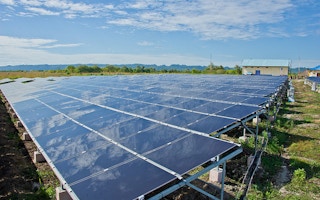A small Australian solar and wave energy firm aims to spearhead an effort to bring cheap, clean power to the poor by 2030, targeting hundreds of millions of dollars of projects, one microgrid at a time.
Carnegie Clean Energy was chosen by a team called the Unreasonable Group over at least 10 other firms, from countries including Brazil, the Netherlands and the United States, for its flexible approach using a mix of renewable energy.
The Unreasonable Group was set up by a Denver-based entrepreneur to tap businesses to speed up efforts to meet the United Nation’s 17 global development goals, from eradicating hunger to building infrastructure, by 2030.
“
You could deliver hundreds and hundreds of these systems into the market and have a massive impact on people’s lives there who are either underelectrified or have no electricity.
Michael Ottaviano, chief executive, Carnegie Clean Energy
The group - set to host two weeks of brainstorming in Washington in July with the US State Department, 17 entrepreneurs, development banks, and some major corporations - has set an ambitious target for Carnegie, a $115 million firm.
“We do expect that within the next five to ten years, Carnegie will deliver some of the largest micro-grids and utility scale batteries ever developed in Australia and replicate these types of projects throughout the South Pacific’s island communities, rural mainland Asia, and even Africa,” Unreasonable Group said in emailed comments.
Carnegie Chief Executive Michael Ottaviano, based in Western Australia, has yet to decide where to begin, and has more modest ambitions.
“We don’t want to try and deliver clean and affordable energy to the entire developing world. That’s possibly a bit more than we could chew,” Ottaviano told Reuters in an interview.
He pointed to Indonesia as a possible starting point.
“We want to go into a developing region or country where we can deploy hundreds of these microgrid style systems. So we’re talking hundreds of millions of dollars of investment associated with that,” he said.
Working with the Unreasonable Group gives Carnegie access to partnerships with development banks and major corporations that operate in developing countries that can help it overcome some of the challenges of trying to invest in poorer nations.
The main challenge is not technology, but navigating local regulations and issues like counter-party risk, Ottaviano said.
Investment in so-called distributed energy systems, as opposed to big central power stations that also need transmission and distribution lines, would pay off for households and governments that have to subsidise expensive power.
“It can save money immediately. So there’s no challenge from an economic business case,” Ottaviano said.
Systems using solar power and batteries with diesel as back-up could work well in places with remote communities.
“You could deliver hundreds and hundreds of these systems into the market and have a massive impact on people’s lives there who are either underelectrified or have no electricity.”
($1 = 1.2992 Australian dollars)
This story was published with permission from Thomson Reuters Foundation, the charitable arm of Thomson Reuters, that covers humanitarian news, women’s rights, trafficking, property rights, climate change and resilience. Visit http://news.trust.org.










